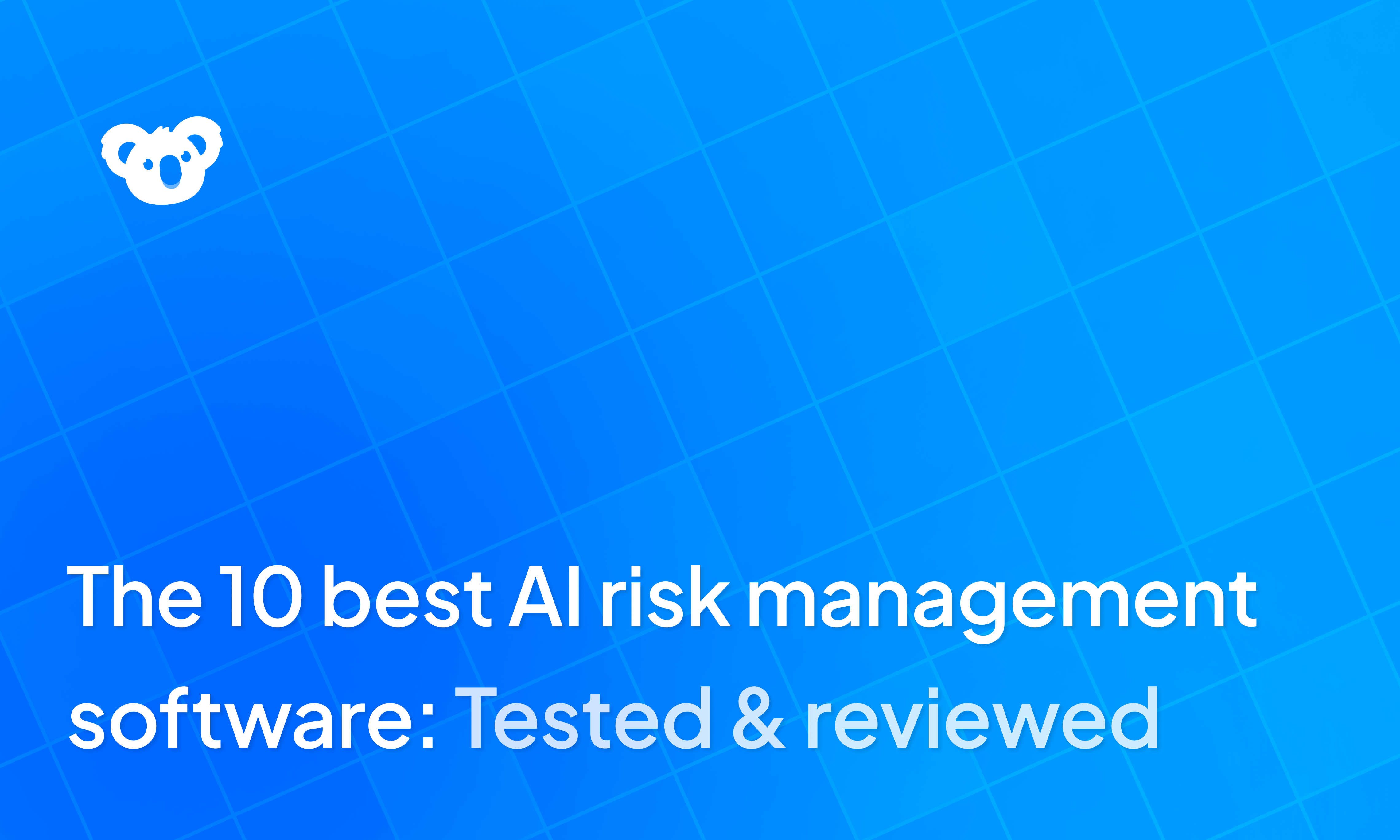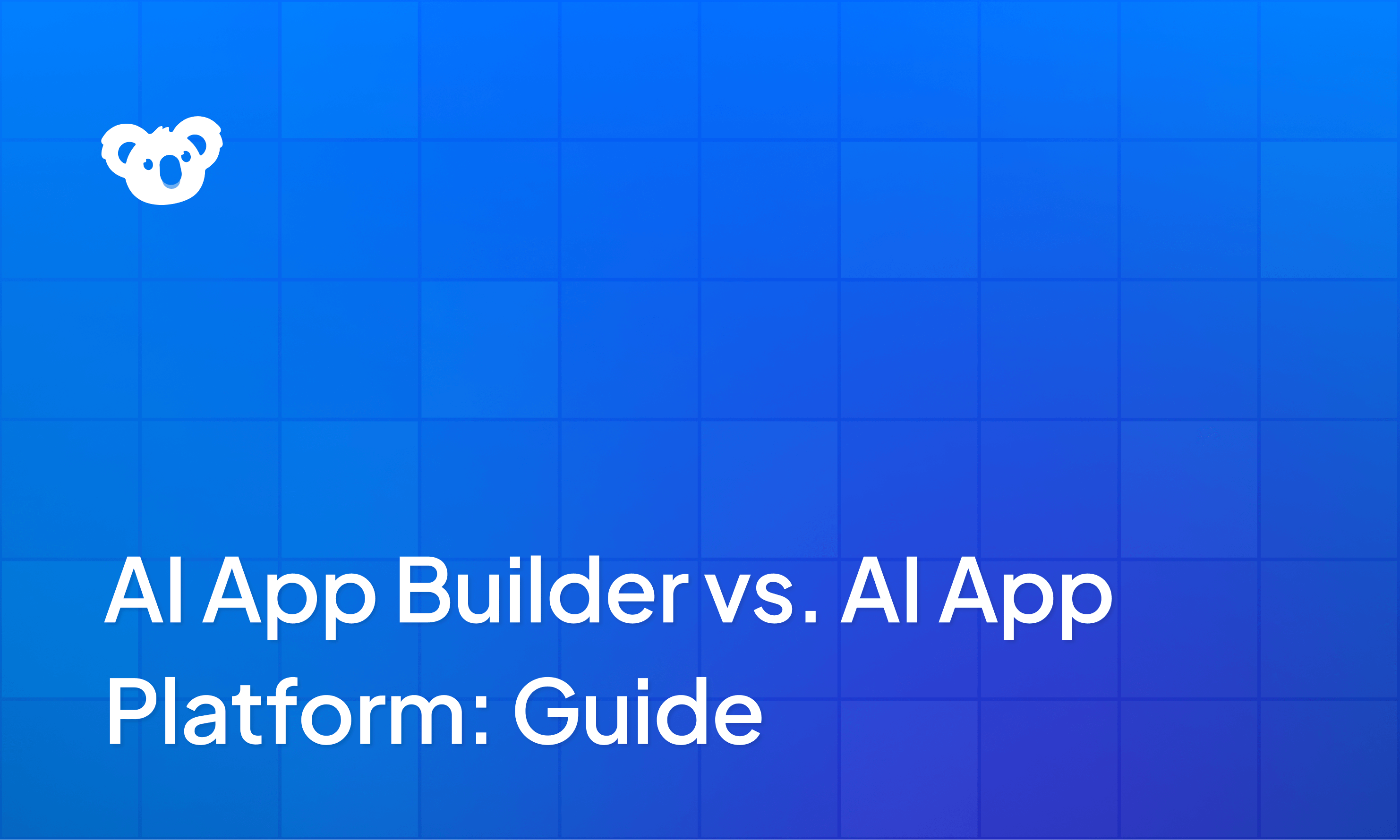


Monolithic and microservices architectures offer two fundamentally different ways to structure applications. Monolithic emphasizes simplicity and cohesion, while microservices favor modularity and independent scalability. Picking the right architecture for your app can save your team months of rework later.
In this article, we’ll cover:
- What monolithic and microservices architectures are
- Key differences and trade-offs
- When to use each (and why some teams go hybrid)
Let’s start with monolithic architecture.
What is a monolithic architecture?
A monolithic architecture is the traditional way of building software as one self-contained unit. All the components (UI, business logic, database, etc.) are integrated into a single codebase and deployed together.
In other words, a monolithic application is one big app. If you want to update one part, you have to build and deploy the whole thing. That might sound limiting, but this simplicity can be great at the beginning of a project when everything is small and manageable. You have one codebase and one deployable unit to worry about.
What are microservices?
A microservices architecture breaks the application into many smaller, independent services that work together. Each service focuses on a specific business capability and can be developed, tested, deployed, and scaled on its own.
You can think of it as a collection of mini-apps (services) that talk to each other over APIs or message queues rather than one big program. This approach increases flexibility and scalability since teams can update or scale one service without touching the rest.
Monolithic architecture vs microservices: Key differences
Before we dive into the details, here’s a quick side-by-side comparison of how monolithic and microservices architectures differ across key areas.
Pros & cons of monolithic architecture
Monoliths tend to get a bad rap in modern software circles, but they’ve stuck around for a reason. When used in the right context, they’re surprisingly effective. That said, they do come with real limitations, especially as systems grow more complex.
Below are its pros and cons:
Pros
- Simpler to deploy: Since you’re deploying a single program, you end up with fewer pipelines, fewer environments, and a much simpler infrastructure overall. There’s no need to bring in a service mesh or containers, just ship your app.
- Easier to test end-to-end: Because the entire app runs in one process/runtime, you can perform end-to-end testing in a single environment. Tracing through a bug is also easier since you only have one application’s logs to check, not many services.
- Better performance for small apps: Calls between components are in-process function calls rather than network calls. A single API endpoint can handle a broad range of tasks, making certain operations faster than if they were split into many networked services.
Cons
- Scaling is coarse-grained: Monoliths can be scaled horizontally, but only as a whole. If one part of the app, say the reporting module, is under heavy load, you can’t scale just that part. You’re forced to throw resources at the entire application, which is inefficient and costly.
- Slower to update: A small change in one module means rebuilding and redeploying the entire application. This tight coupling can make the code harder to understand and modify.
- Reliability issues: Because everything is one unit, a bug or crash in any part of the application could bring down the whole app.
- Technology lock-in: All components use the same tech stack. Adopting a new technology (say, a different database or language) is difficult because it requires rewriting a large portion of the monolith. You’re constrained by the choices made for the unified codebase.
- Longer deployment cycles: Even a minor fix can trigger a full rebuild and redeploy of the entire application. As the codebase grows, CI/CD pipelines become slower and more fragile. Over time, the overhead of each release can outweigh the development effort itself.
Pros & cons of microservices
Microservices architecture promises flexibility, speed, and scale. It offers significant advantages for many organizations, but it introduces a new layer of operational and organizational complexity that not every team is ready for.
Let's break down its main pros and cons:
Pros
- Agility and faster releases: Each microservice can be developed and deployed independently. Teams can update one service without waiting on others, which enables more frequent release cycles.
- Independent scaling: You can scale out services that face a heavy load without scaling the entire application. For instance, if the user profiles service is getting tons of traffic, you can allocate more resources to it alone.
- Better fault isolation: If one microservice goes down or has a bug, it only affects that particular service, not the entire system. The application as a whole can continue to run provided the ops team sets up proper timeouts, retries, and fallback strategies.
- Flexibility in tech stack: Different services can use different technologies best suited for their task. For example, one team can use Python for a machine learning service while another uses Node.js for a real-time API.
- Team autonomy and specialization: Microservices align with small, cross-functional teams that own each service. Teams can work in parallel on different services without stepping on each other’s toes, often resulting in happier developers and faster development at scale.
Cons
- Added complexity and sprawl: The biggest trade-off of microservices is complexity. Instead of one deployable, you’re now managing dozens (or hundreds) of services, each with its own deployment pipeline, monitoring setup, and potential failure points. You need serious DevOps maturity to handle the sprawl.
- More infrastructure overhead: Each microservice typically requires its own database, runtime, deployment pipeline, and monitoring stack. This adds significant complexity and increases infrastructure costs. Without strong DevOps practices and automation, managing it all becomes a serious operational burden.
- Communication overhead: More services mean more APIs and interactions to manage. Teams have to coordinate interfaces and data contracts carefully. Inter-service communication adds its own costs, including network latency, error handling, and partial failures. In the end, you may have traded a complex codebase for a complex web of services.
How Superblocks supports microservices teams
Superblocks is designed to support both microservices and monolithic architectures, and it brings value to teams across that entire spectrum.
When you have dozens (or hundreds) of services spread across your organization, building internal tools or stitching together workflows becomes a massive time sink. Superblocks provides a unified way to develop and integrate all those pieces.
For teams maintaining large monolithic applications, it reduces the time and effort it takes to modernize or replace them with more modular, maintainable architectures.
Here’s how it delivers across both environments:
Speed and ease of building
Clark AI helps microservices teams generate integrations across multiple APIs, databases, and services using natural language. Within that same workflow, you can switch to the drag-and-drop visual editor or customize with code. This enables faster development of internal tools that orchestrate distributed systems.
Full customizability
The platform is fully extensible. If the visual builder or AI gets you 90% of the way, you can hand-code the last 10% to meet your exact needs. Additionally, because each Superblocks app is essentially a React project, you could merge it into a larger codebase or host it on your own if needed.
Centralized governance and security
Superblocks comes with built-in governance features like Single Sign-On (SSO), role-based access control (RBAC), audit logs, and platform-level permission management. No matter which team builds an app, it inherits a unified, governed environment. That makes it easier to scale internal development without compromising oversight or control.
Easy integration and orchestration
Superblocks can connect to pretty much any database, REST/GraphQL API, message queue, or third-party service. This means if you have a monolithic database or some microservices APIs, you can easily pull data from both into one Superblocks app.
Flexibility to run in the cloud or on-premises
Thanks to the On-Premise Agent, you can keep data in-network while still using Superblocks’ fully managed platform. That’s huge for teams working with sensitive systems or regulatory constraints, but don’t want to fully self-host their app builder.
When to choose monolith vs microservices
Choose monolith if:
- You’re early-stage and speed matters: If you’re a small team or startup building your first product, a monolith is often the practical choice. It’s faster and cheaper to build, easier to deploy, and gets you to market without the overhead of managing distributed systems.
- Your app is simple or domain-specific: If your business logic is fairly straightforward and you’re not expecting massive scale, a monolith keeps things clean and easy to maintain.
- You don’t have the ops maturity (yet): Microservices require solid DevOps practices, automated CI/CD, centralized monitoring, and a team that can handle distributed system design. If you’re not there yet, a monolith avoids unnecessary complexity.
Choose microservices if:
- You need to scale fast and support complex functionality: If you expect your app to grow rapidly or handle a wide range of use cases, microservices offer the flexibility to scale individual parts of the system as needed. Large, complex systems or anything serving lots of users typically benefit from this kind of fine-grained scalability.
- Different parts of your system have distinct requirements: Maybe one module needs to handle real-time data streaming while another runs heavy batch processing jobs. Microservices let you tailor the tech stack and performance profile for each use case without compromise.
- You have multiple teams building in parallel: Microservices shine in organizations with many developers working across different domains. Teams can own services end-to-end, ship independently, and avoid stepping on each other’s toes. This autonomy can dramatically improve development speed and reduce bottlenecks.
Is a hybrid approach the best of both worlds?
In most cases, yes, especially for teams that want to scale responsibly without over-engineering too early.
One common path is to start with a well-structured application with clear internal boundaries. You might keep the core domain of your application as a monolith, but spin off certain modules or new features as independent microservices. This way, you preserve the simplicity and coherence of a monolith for the heart of your system, while leveraging microservices for areas that need greater flexibility or scalability.
For example, an established product might expose new functionality through microservice APIs or offload compute-heavy workloads to standalone services, without rewriting everything. This kind of gradual modernization lets teams adopt microservices where they’re most valuable, without taking on unnecessary complexity.
That said, keep in mind that a hybrid approach also means dealing with the complexity of both models. You’ll need to manage integration between the monolith and the services, and ensure you don’t end up with a tightly coupled “distributed monolith”.
How Superblocks helps manage change in internal tools
Superblocks acts as a bridge between the monolithic and microservices worlds by providing a unified, AI-assisted development platform that emphasizes speed and governance. Monolithic teams can modernize faster by layering on new UIs or extending apps without re-architecting. Microservices teams can use it to bind together services and build new tools without drowning in custom code for every little app or workflow.
This is possible thanks to our comprehensive set of features:
- Multiple ways to build: Accelerate development with Clark AI, our natural-language agent that helps you scaffold, test, and secure applications before refining them visually or in full code.
- Built-in security & RBAC: Enforce organization-wide role-based access control (RBAC), authentication, and security policies from a single platform.
- Centralized governance: Get full visibility into who’s building what, where apps are deployed, and how they’re performing, all in one place.
- Git-based change management: Every change is versioned and tracked in GitHub or GitLab, so you can review, approve, and roll back updates, aligning citizen devs' apps with enterprise-grade CI/CD practices.
- Standardized UI & components: Maintain a consistent look and feel across all applications with prebuilt, reusable UI elements that align with enterprise design standards.
- Pre-built integration connectors: Control which systems and data sources are available to citizen developers.
- On-premise deployment options: Keep sensitive data and business logic inside your infrastructure while still managing apps through Superblocks.
- Environment separation & sandboxing: Let teams build and test apps in isolated environments before pushing to production.
- Incredibly simple observability: Receive metrics, traces, and logs from all your internal tools directly in Datadog, New Relic, Splunk, or any other observability platform.
Superblocks lets you standardize and accelerate development (with AI and templates) while maintaining enterprise-grade governance and security. To see it in action, explore our Quickstart Guide or try it for free.
Frequently asked questions
What is the main difference between monolithic and microservices architecture?
A monolithic architecture bundles all application components — UI, backend logic, and data access — into a single, unified codebase. Microservices architecture breaks the app into independent services, each responsible for a specific function, which communicate over APIs. The core trade-off between these two architectures is simplicity vs. flexibility.
Is microservices always better than monolith?
Nope. Microservices offer advantages at scale, but they also introduce a lot of complexity. For small teams or early-stage products, monoliths are often faster to build, easier to test, and simpler to manage. Microservices only pay off when your system is big enough to justify the overhead.
Can a monolith be broken into microservices over time?
Absolutely, and in fact, that’s often the best approach. Start with a well-structured monolith, define clear module boundaries, and extract services as scaling needs or team structure evolve. This lets you avoid premature complexity while still preparing for long-term flexibility.
What’s a good example of a monolithic system?
A legacy e-commerce platform built in something like Ruby on Rails or Laravel, where product listings, checkout, payments, and user accounts all live in the same repo and database. It’s fast to build and deploy, but scaling or updating individual parts can become painful over time.
What tools help manage microservices complexity?
You'll typically need container orchestration (like Kubernetes), service discovery tools (like Consul), API gateways (like Kong), monitoring stacks (like Prometheus and Grafana), and CI/CD automation. Some teams also adopt internal platforms or developer portals to bind multiple microservices.
What are the risks of moving too early to microservices?
You end up trading simple problems for distributed ones. That includes network latency, inter-service failures, duplicated effort, and a spike in infrastructure complexity. Without mature DevOps and observability, things can break in hard-to-debug ways and slow you down instead of speeding you up.
Is Kubernetes required for microservices?
Not technically, but it’s often used. Kubernetes helps orchestrate and scale services, manage deployments, and handle service discovery. That said, you can start with simpler setups using Docker Compose, managed container services, or even serverless functions, especially in smaller environments.
When should a startup avoid microservices?
If you have a small team, a narrow product scope, or limited ops resources, microservices will likely slow you down. Until you start hitting scaling bottlenecks or team coordination issues, a monolith is usually faster, cheaper, and easier to manage.
Can low-code platforms support microservices architectures?
Yes, low-code platforms can support microservices, but they need to be open, extensible, and designed for modularity. Look for ones that let you write real code when needed, expose and consume APIs cleanly, and integrate with your existing SDLC and infrastructure.
Stay tuned for updates
Get the latest Superblocks news and internal tooling market insights.
You've successfully signed up
Request early access
Step 1 of 2
Request early access
Step 2 of 2
You’ve been added to the waitlist!
Book a demo to skip the waitlist
Thank you for your interest!
A member of our team will be in touch soon to schedule a demo.
Table of Contents






